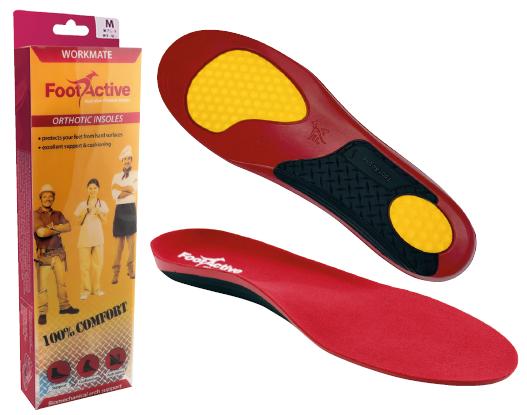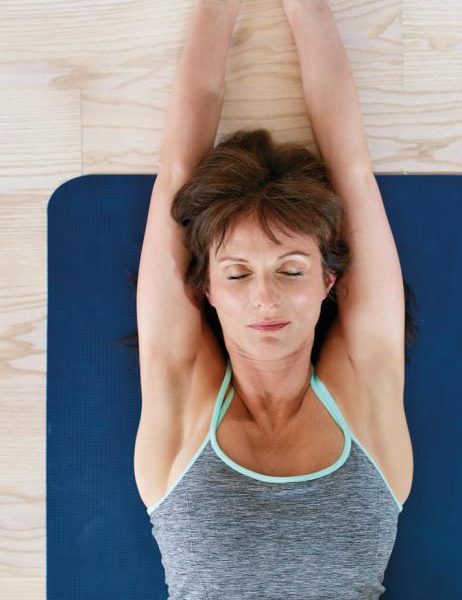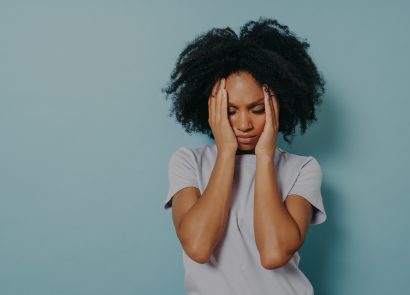Back pain?
Your back is one of the most common areas of your body to experience twinges and tension, according to the NHS. “Individuals with back pain may feel a range of unpleasant sensations, from muscle aches and shooting or stabbing pains to uncomfortable tension when bending, lifting, sitting or standing and sometimes a pain radiating down the legs,” explains sports therapist, Tom Austin (tomaustin.org). “There are many root causes to these, including lifting more than you can handle, or with a poor technique which results in added stress to that area. Discs, (which act as cushions between the bones in your spine) can be damaged, putting pressure on the nerves running down the spine.” Tom emphasises that back problems become more likely as we get older, often starting in our 30s and 40s. “Also, those who are overweight, or not exercising regularly enough, will have weak muscles and will likely struggle to support their skeleton properly due to the excess strain in this area,” Tom adds.
Try this:
“Exercise can strengthen the muscles around your back and abdomen, supporting your spine effectively and preventing aches from occurring in the first place,” advises Tom. “Regular stretching can achieve this on a day-to-day basis. You should also consider getting regular sports massages as these ensure your muscles are kept healthy by increasing the blood flow and nutrients within the circulatory, lymphatic and nervous systems. In other words, they help to flush away toxins that may be blocking pathways within the body. Next time you’re experiencing any back pain, you should see a sports therapist for a deep tissue massage or, try some passive stretching to alleviate it.” It’s also important to remember to maintain a good posture to improve back pain. Try not to slouch, hold your head straight and tuck your chin in. Stand with your shoulders back, knees straight, and belly pulled in.
Joint pain?
Joint pain is yet another complaint commonly associated with getting older. Any damage to your joints from disease or injury can interfere with your movement and cause a lot of pain in different parts of the body, including your knees, ankles, hips and shoulders, as well as fingers and wrists. According to The Joint Health of the Nation Report 2019, 17 million people in the UK have a joint and musculoskeletal condition and, five times more people in the UK have joint health problems than diabetes.
Try this:
Pilates stretches can be a great remedy for joint pain. “The shell stretch mobilises the hips, ankles, knees, spine and shoulders,” says Pilates teacher, Lyndsay Hirst (yourpilatesphysio.com). “Start on all fours. From this position, direct your hips back to sit as far back onto your heels as you can, keeping your hands where they are. Keep your elbows lifted. Once in this position, take some deep breaths in and out. As you exhale, try to allow yourself to sink a little deeper into the stretch. Hold for five to six breaths and perform daily.”
Headache?
“Recurring headaches can be caused by many factors such as dehydration, stress and even the environment (air pressure or temperature),” says Lloyds Pharmacy pharmacist, Pareena Patel (lloydspharmacy.com). “Some people are more prone to headaches than others and there are some common lifestyle factors which may play a part in contributing to them. Not getting enough fresh air during the day, or skipping screen breaks if you work in an office are some examples. Also, not staying hydrated or exercising regularly can result in poor circulation, where varying blood flow is thought to be one of the causes of migraines and headaches.”
Try this:
“If you have a headache, make sure you’re drinking enough water and take time to rest in a dark room to help ease the symptoms,” advises Pareena. “You could also try supplementing with magnesium as there are a wealth of studies which link the natural mineral with the prevention of headaches. Often referred to as ‘nature’s tranquiliser’, magnesium has relaxing qualities and induces calm feelings, which certainly helps if your headaches are stress-induced. Not only that, but a study published in the journal, Headache, found that when treated with intravenous magnesium sulphate, migraine pain disappeared in 86.6 percent of patients.”
Stomach ache?
“There are many causes of stomach ache and they are usually nothing to be concerned about. Some of the most common causes can be trapped wind, indigestion, constipation, diarrhoea or food poisoning. In some cases, persistent stomach ache can be as a result of a longer-term condition, such as irritable bowel syndrome (IBS) or a stomach ulcer. Looking to your diet is a good starting point to remedy these aches. “If your tummy troubles are the result of bloating or trapped wind, you should try to cut out fizzy sweets and drinks. Other common culprits include, consumption of beans, onions, broccoli, cabbage, sprouts and cauliflower. On the other hand, if constipation is causing stomach issues, try being a little more active, stay hydrated by drinking two litres of water a day and ensure that you are getting enough fibre in your diet. In some cases, stomach aches can be as a result of food intolerances; therefore you could start by keeping a food diary to help you identify triggers. Most people suffer intolerances with gluten-, or dairybased products.”
Try this:
Gentle stretches and yoga can help relieve trapped wind and ease bloating. The downward dog yoga pose is one position which can ease discomfort. Lyndsay explains how to do a downward dog: “Start on all fours with your toes curled under. Lift your knees from the floor and continue to straighten your knees as your hips lift towards the ceiling. Try to push your chest towards your thighs (as though you are trying to push your hands and feet away from each other) drop your heels as close to the floor as you can. If the position is uncomfortable, take each stage slowly and only to the point when you feel a light stretch. Hold for five breaths and release.” If you suspect you have a food intolerance, visit your doctor who will advise the best course of action.
Leg ache?
Among people aged over 50 and those who are overweight, leg ache can be a widespread cause of suffering. “Discomfort anywhere in the leg can range from a dull ache to an intense stabbing sensation,” says Pareena. “Most leg pain results from irritation, inflammation, overuse, or injuries in the joints, bones, muscles, ligaments, or tendons. Some types of leg pain can be traced to problems in your lower back. Leg pain can also be caused by blood clots, varicose veins or poor circulation.”
Try this:
“You can usually treat leg pain at home if it’s due to cramps or a minor injury,” says Pareena. “Try resting your leg as much as possible, and elevate it with pillows. For minor sprains and strains, try a common technique called the PRICE therapy method, which stands for protection, rest, ice, compression and elevation. However, in some cases, a serious medical condition could be causing the pain, so please see your doctor if you’re experiencing severe or persistent leg pain.”
Star buys
FootActive Workmate £21.95, footactive.co.uk




















